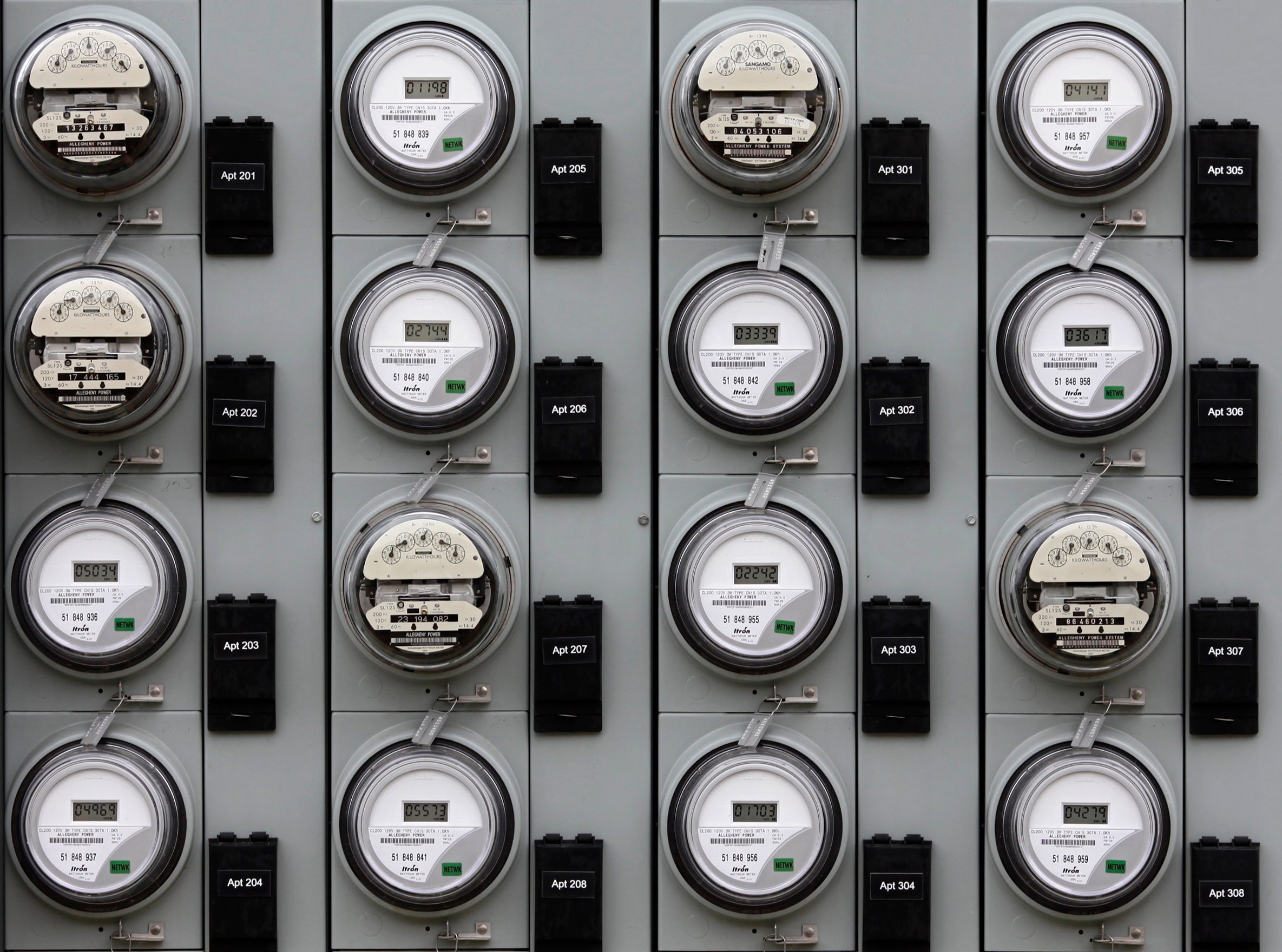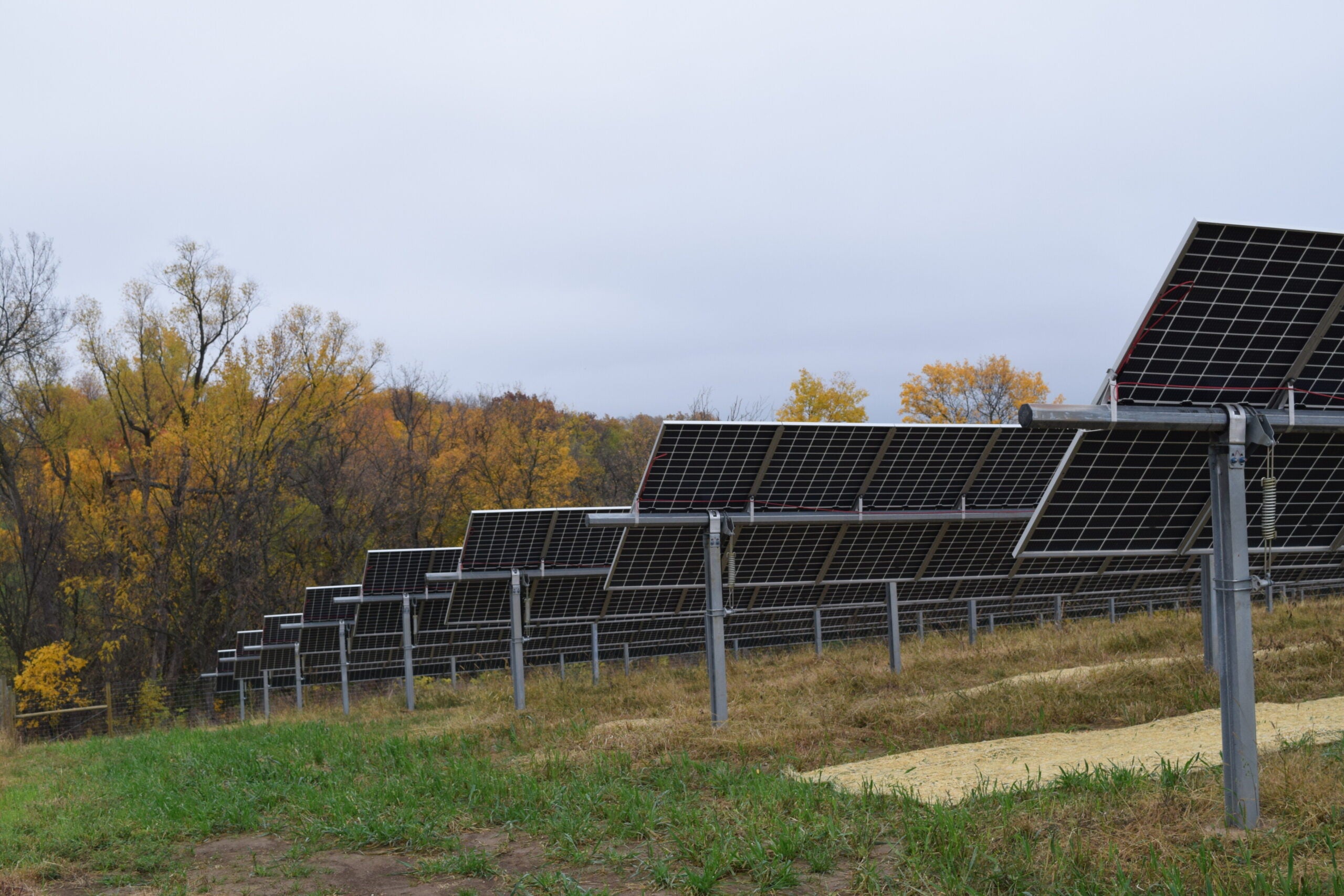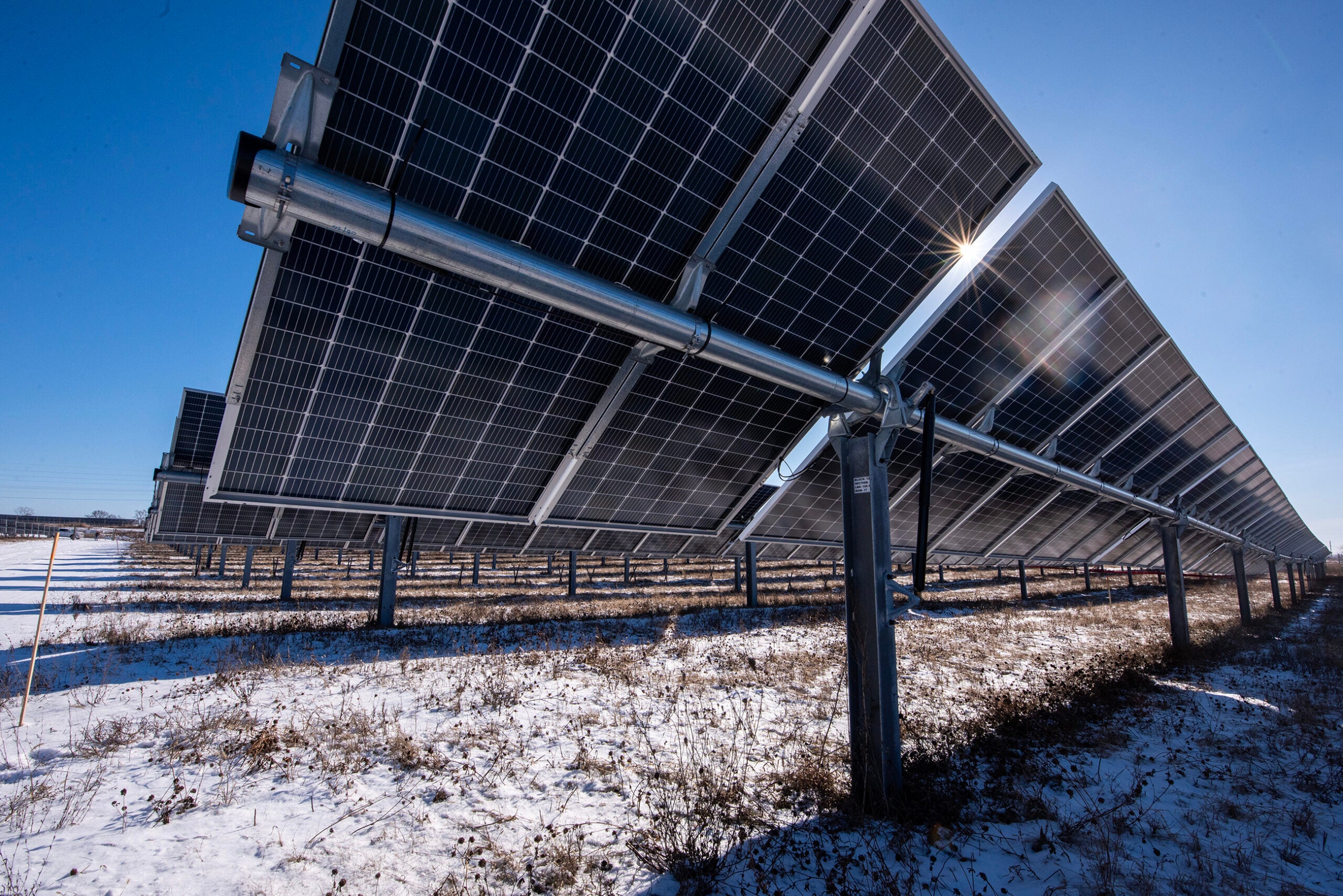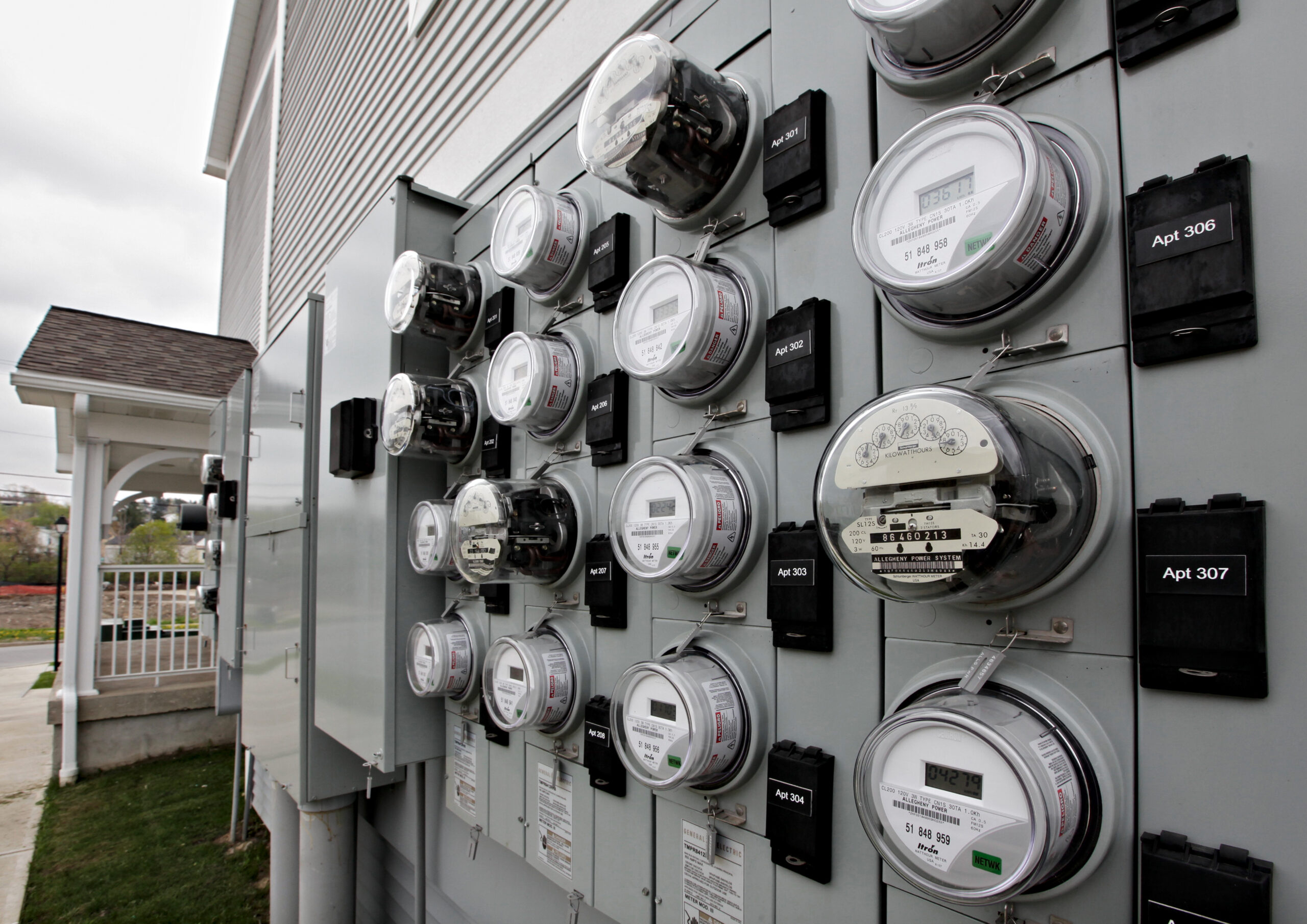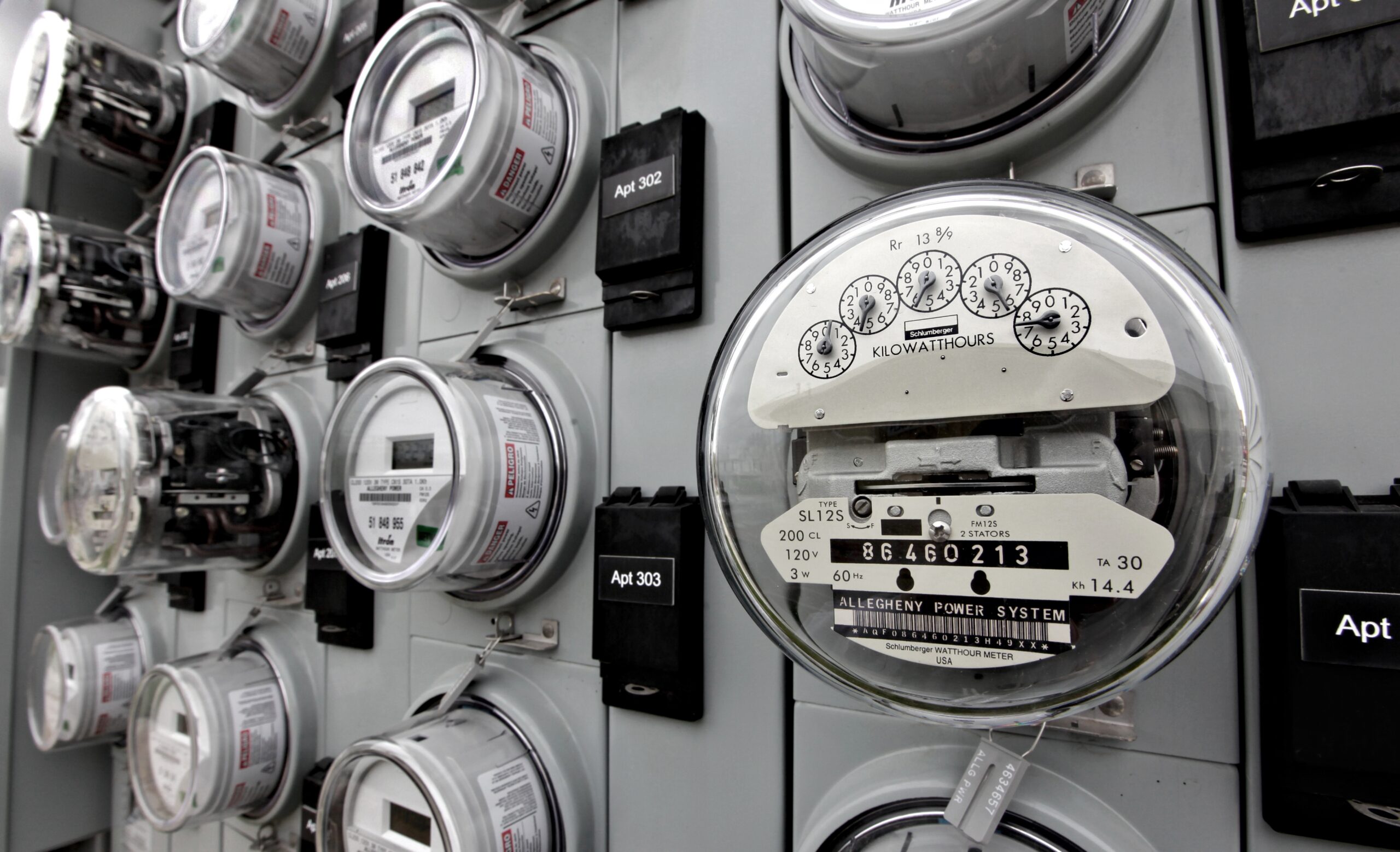A pair of Wisconsin utilities are proposing changes to the reimbursements given to customers with solar panels that put energy back into the grid, as industry groups lobby against measures advocates say would help expand access to residential solar.
Alliant Energy and Madison Gas & Electric have applied to increase electric rates in 2024. As part of that process, both utilities have proposed changes to “net metering.” Net metering is a billing mechanism in which utilities pay solar owners for the electricity they add to the grid.
Renewable energy advocates and municipalities have filed objections with the Public Service Commission of Wisconsin, or PSC, to rate proposals from both Madison Gas & Electric and Alliant Energy. They cited changes to net metering and proposed rate hikes.
News with a little more humanity
WPR’s “Wisconsin Today” newsletter keeps you connected to the state you love without feeling overwhelmed. No paywall. No agenda. No corporate filter.
Proposals from both utilities have yet to be approved by the PSC. They come as the utility industry lobbies against a state bill that would allow non-utilities to provide community solar farms, and after the industry lobbied against a bill last session that would have exempted providers of third-party owned systems from regulation as a public utility.
MGE proposes bringing net metering for residential customers in line with large businesses
Madison Gas & Electric, or MGE, proposed merging its billing rates for large and small solar energy systems. Currently, the company has two rates: One for large systems over 100 kilowatts, typically larger businesses or facilities, and another for systems 100 kilowatts and under, typically residential and small-business customers.
Under the current structure, large-system customers receive 7.5 cents per kilowatt-hour generated into the grid, while residential customers receive 13 cents per kilowatt-hour, according to a document filed with the PSC.
If changes are approved, residential customers would receive rebates in line with those of large-business customers. But the new proposal will only affect customers who apply to connect their solar systems to the grid after April 1, 2024, according to MGE spokesperson Steve Schultz.
“Existing net metering customers are unaffected by this proposal,” he said. “They will continue to be compensated under the current rates.”
While new residential customers will likely see smaller rebates for excess energy generation, Schultz said MGE has proposed an upfront incentive payment program that will pay new net metering customers $200 per kilowatt for up to 5 kilowatts.
“This will assist with the customer’s break-even period for their investment,” Schultz said. “Customers who participate in net metering will continue to see savings from offsetting their own energy use with the electricity generated by their own solar.”
Alliant proposes reimbursement based on when energy is produced
Alliant Energy is also proposing changes to its net metering program that the company said could boost rebates for solar customers putting energy into the grid.
The utility has proposed moving from monthly to hourly net metering that refunds customers based on when they’re generating excess energy into the grid; customers would receive more money if they add to the grid at times of high energy usage.
Alliant’s current net metering reimbursement rate for generation is roughly 7.1 cents per kilowatt-hour for energy exported to the grid, according to utility spokesperson Tony Palese. He said the rate under the current structure is expected to shrink to 4.6 cents in 2024.
While the base reimbursement rates for Alliant’s new net metering proposal range from 4 to 7 cents per kilowatt exported — depending on when excess energy is put into the grid — Palese said the company is also proposing a new credit that would bring estimated reimbursement up to 7.9 to 13.5 cents per kilowatt.
“Also under the Power Partnership proposal, Alliant Energy would pay for any distribution system upgrades needed to connect customers’ solar to the grid, which can lower upfront costs for customers and reduce payback times compared to requiring customers to foot those bills,” Palese said.
Why are changes being proposed?
In testimony to the PSC, MGE Rates Director Brian Penington said the reimbursement costs the company pays to residential solar customers are considered fuel costs and are then paid by all the utility’s other electric customers.
“As more customers have installed solar systems in recent years, this fuel expense for MGE’s customers has been growing rapidly,” he wrote.
Schultz added that the proposal ensures solar energy from customers is compensated at the same rate for both residential and business customers.
“It creates consistency in MGE’s buyback rates across all customers and facilities selling solar to MGE,” he said. “We believe our proposal continues to incentivize rooftop solar.”
Similarly, Tyson Cook, Alliant Energy distributed generation services manager, told the PSC that its current monthly net metering doesn’t account for energy’s value depending on when it’s put into the grid.
“After netting a customer’s monthly use, neither the utility nor the customer may know quite how much power was consumed from the utility or exported to the grid for the eventual use of others,” he wrote.
Palese added that Alliant implemented a program in Iowa in 2021 that’s similar to its net metering proposal in Wisconsin.
“Since its adoption, Alliant Energy has not seen any slowdown in the growth of rooftop solar in Iowa,” he said. “In fact, the total number of solar systems our Iowa customers placed into service in 2022 was more than double the number in 2020.”
Sam Dunaiski, executive director of RENEW Wisconsin, said solar customers still pay for energy consumed from the grid and pay to be connected to the grid.
“Most of the time, when that solar array is producing electricity, it’s directly feeding your home or your facility. It’s powering your lights, your computers, your appliances, etc.,” Dunaiski said. “There is no real difference, in our opinion, if a customer decides to be very thrifty with their energy use, or if they decide to install a solar array.”
He also said net metering policies tend to incentivize rooftop solar.
“The rooftop solar piece of our renewable energy transition puzzle is not all of it, but it’s a significant portion,” Dunaiski said.
While Wisconsin utilities have invested heavily in transitioning away from fossil fuels, the industry has also lobbied against legislation that renewable advocates say would make residential solar more accessible.
Utilities say letting customers lease solar panels from a solar company would circumvent the law by allowing non-utilities to sell energy to customers. Similarly, industry groups say non-utility community solar would allow developers to benefit from the electric grid with no responsibility for maintaining reliability.
Dunaiski said consumers need more options beyond purchasing a solar system outright, which still has a significant upfront cost.
“We want to make sure that renewables of all scales are available to Wisconsinites, and we want to make sure that we do that in a safe and responsible way,” he said. “We also want to make sure that utilities can continue to operate because it is very important that we maintain the stability of the grid and that we make sure that everybody has power if and when they need it.”
Editor’s note: RENEW Wisconsin and Alliant Energy are underwriters of Wisconsin Public Radio.
Wisconsin Public Radio, © Copyright 2026, Board of Regents of the University of Wisconsin System and Wisconsin Educational Communications Board.
